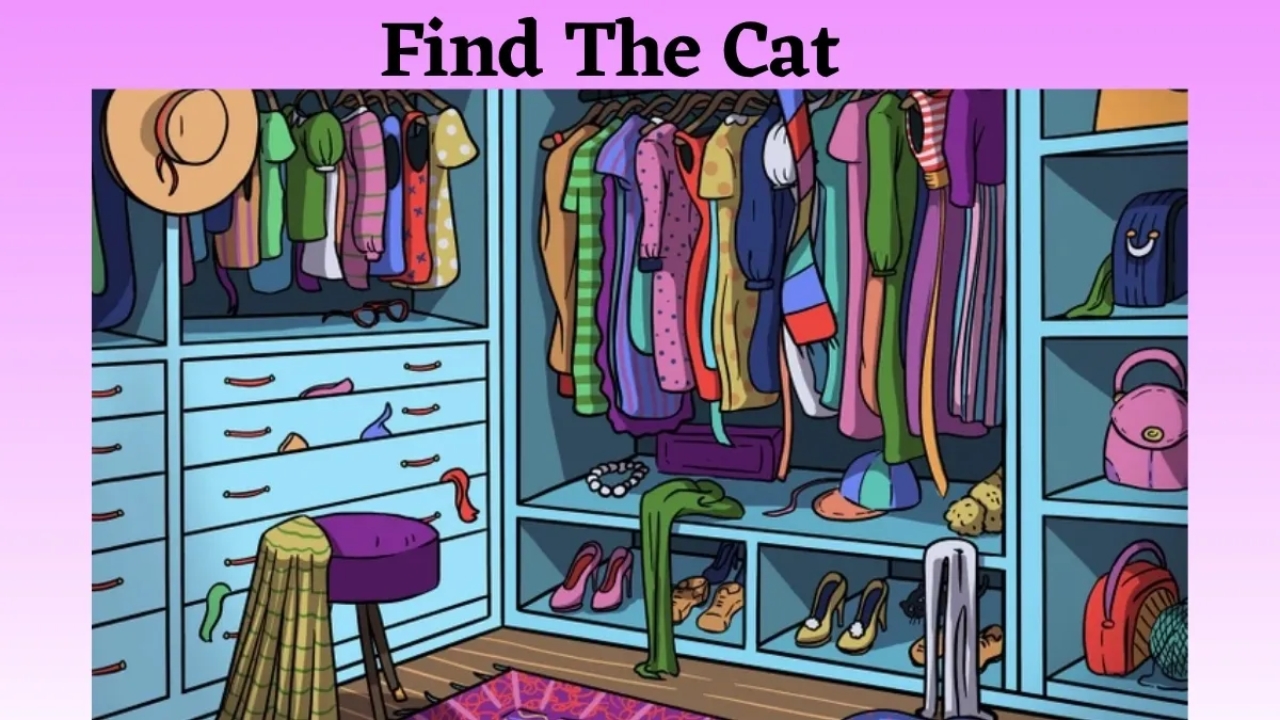Optical Illusion Challenge Visual puzzles have captivated human minds for centuries, serving as both entertainment and cognitive training tools. The hidden cat in cloth wardrobe challenge represents one of the most engaging optical illusions designed to test your observation skills and attention to detail.
Understanding Visual Perception Puzzles
Brain teasers involving hidden objects work by exploiting how our visual cortex processes information. According to research from the National Institute of Mental Health, these puzzles enhance cognitive flexibility and improve pattern recognition abilities. The human brain naturally seeks familiar shapes and patterns, making hidden object puzzles both challenging and rewarding.
Optical Illusion Challenge: Find the Cat in the Cloth Wardrobe
Benefits of Solving Hidden Object Puzzles
Regular engagement with visual puzzles provides numerous cognitive benefits. Studies conducted by cognitive researchers demonstrate that these activities:
- Enhance visual-spatial intelligence
- Improve concentration and focus
- Strengthen memory retention
- Develop problem-solving skills
- Reduce age-related cognitive decline
The Science Behind Hidden Cat Puzzles
When searching for hidden cats in complex images, your brain employs sophisticated visual processing mechanisms. The occipital lobe processes visual information while the parietal lobe handles spatial relationships. This collaborative effort explains why some individuals excel at spotting hidden objects while others require more time.
Strategies for Finding Hidden Objects
Systematic Scanning Technique
Professional puzzle solvers recommend dividing the image into quadrants and systematically examining each section. This methodical approach prevents overlooking crucial details and ensures comprehensive coverage of the entire wardrobe area.
Focus on Unusual Patterns
Cats often blend seamlessly with fabric textures, but their distinctive features—ears, eyes, or tail—create subtle disruptions in pattern consistency. Look for:
- Curved lines that break geometric patterns
- Color variations in fabric consistency
- Shadow irregularities
- Texture mismatches
Difficulty Levels and Success Rates
| Difficulty Level | Average Time | Success Rate | Age Group Performance |
|---|---|---|---|
| Beginner | 30-60 seconds | 85% | Children (8-12): 90% |
| Intermediate | 1-3 minutes | 65% | Teens (13-18): 75% |
| Advanced | 3-5 minutes | 45% | Adults (19-65): 60% |
| Expert | 5+ minutes | 25% | Seniors (65+): 40% |
Tips for Puzzle Success
Maintaining proper viewing distance and adequate lighting significantly impacts puzzle-solving success. The Centers for Disease Control and Prevention recommends taking regular breaks during visual tasks to prevent eye strain and maintain optimal performance.
Educational Value and Applications
Teachers increasingly incorporate hidden object puzzles into educational curricula to develop critical thinking skills. The Department of Education recognizes visual puzzles as valuable tools for enhancing student engagement and cognitive development.
These challenges particularly benefit individuals with attention disorders, providing structured exercises that improve focus and concentration abilities through enjoyable activities.
Optical Illusion Answer
Frequently Asked Questions
Q: How long should I spend looking for the hidden cat?
A: Most people find hidden objects within 2-5 minutes. Take breaks if needed.
Q: Are there techniques to improve at visual puzzles?
A: Practice systematic scanning and focus on pattern disruptions for better results.
Q: Can these puzzles help with cognitive health?
A: Yes, regular puzzle-solving supports brain health and cognitive flexibility.
